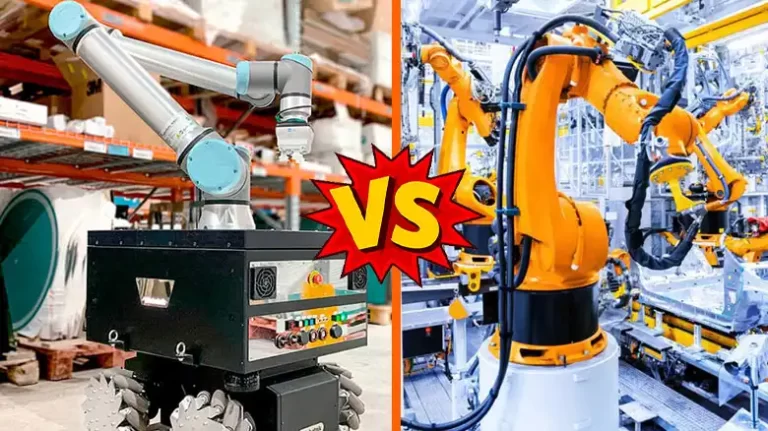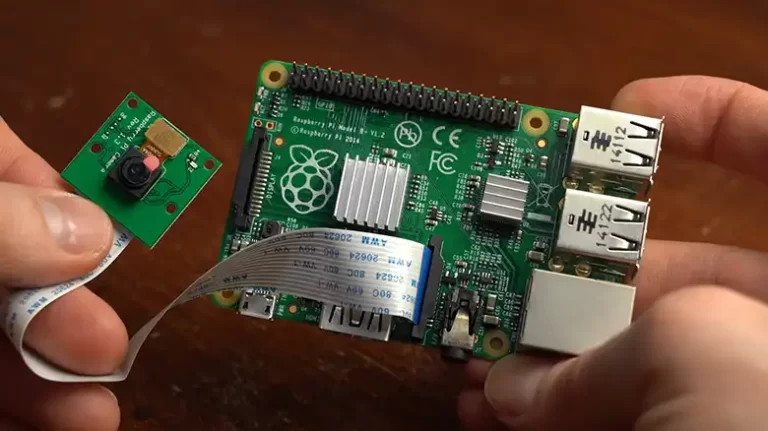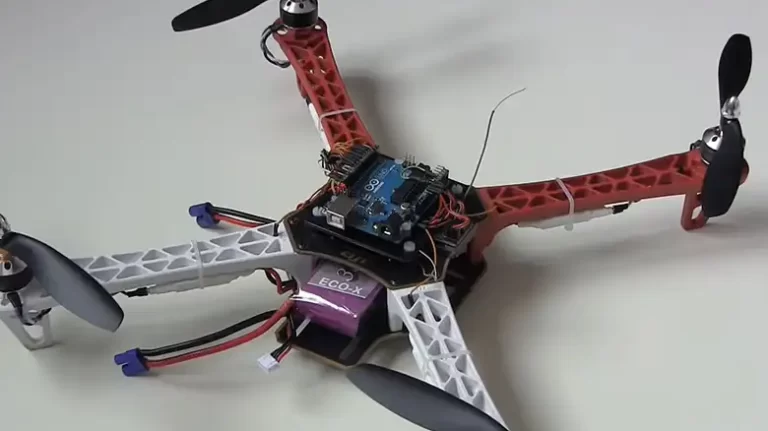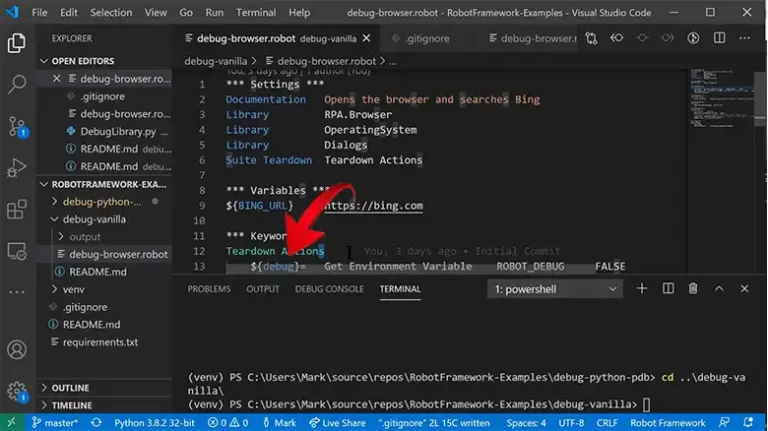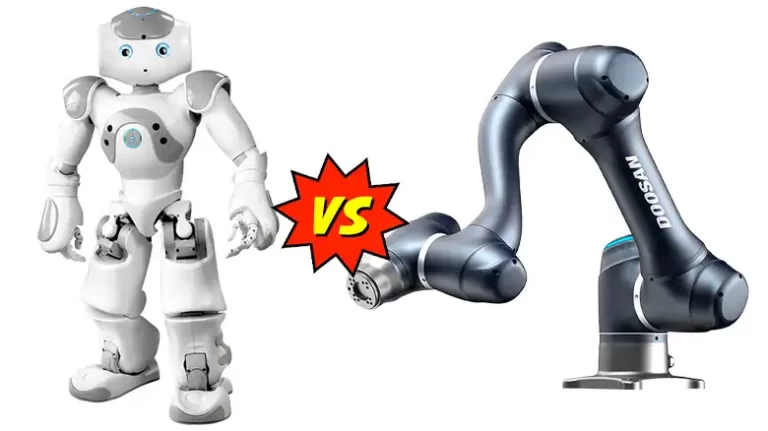Top 12 Industrial Robot Applications and Uses | The Evolution of Automation
The rapid advancements in technology have given rise to an era of automation, where industrial robots play a pivotal role in transforming various industries. These versatile machines are capable of performing a wide array of tasks with precision and efficiency.
Here, we will talk about the top 12 industrial robot applications and uses, each categorized into distinct categories and subcategories, representing different types of robots. We will explore the advantages they have brought to these industries and their significant economic impact. Additionally, we’ll discuss how to select the right type of robot for a specific application and the pivotal role they play in paving the way for the next industrial revolution.
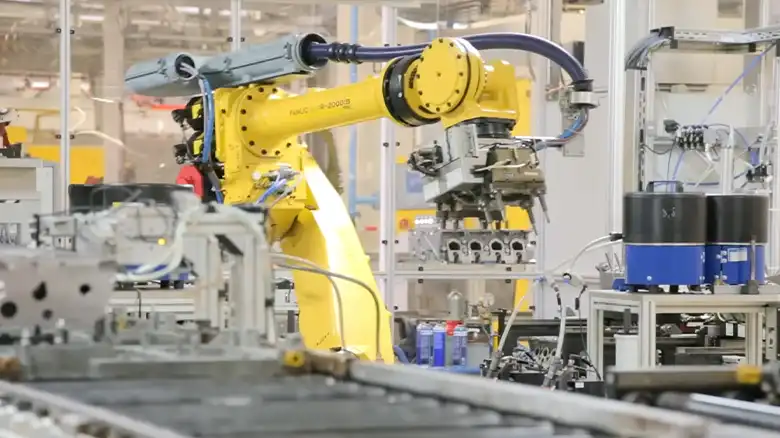
Category 1: Manufacturing Automation
Subcategory A: Assembly Robots
Description: Assembly robots are designed to perform intricate assembly tasks in manufacturing. They excel at tasks that require precision and consistency, such as assembling electronic components, automotive parts, and consumer goods. These robots are equipped with multiple arms, each with a unique tool or end-effector suited to the specific assembly task.
Advantages: The use of assembly robots results in improved efficiency, reduced assembly errors, and increased production speed. They can work continuously without breaks, leading to faster and more consistent product assembly.
Economic Impact: Manufacturers experience reduced labor costs, enhanced product quality, and increased output. Reduced errors and rework lead to cost savings and improved competitiveness in the market.
Subcategory B: Robotic Arms
Description: Robotic arms are versatile machines that can perform various manufacturing tasks. These arms are articulated and can move in multiple directions, making them suitable for pick-and-place, welding, material handling, and even painting. They can be equipped with different end-effectors to adapt to different tasks.
Advantages: The adaptability and versatility of robotic arms are their primary advantages. They can handle a wide range of manufacturing tasks, reducing the need for specialized robots.
Economic Impact: Manufacturers benefit from improved production line flexibility and reduced setup time. The versatility of robotic arms means they can be reconfigured for different tasks, enhancing efficiency.
Subcategory C: SCARA Robots (Selective Compliance Articulated Robot Arm)
Description: SCARA robots are known for their exceptional speed and precision, making them ideal for pick-and-place tasks. Their arms are rigid in the Z-axis and flexible in the X and Y axes. This design allows for quick and accurate movements in a horizontal plane.
Advantages: SCARA robots are incredibly fast and precise, making them perfect for high-speed pick-and-place operations. They excel in applications where speed and precision are crucial.
Economic Impact: Manufacturers using SCARA robots experience increased throughput and reduced cycle times. This results in higher productivity and decreased production times.
Category 2: Welding
Subcategory A: Arc Welding Robots
Description: Arc welding robots are designed for precise welding in various industries, including automotive and construction. These robots are equipped with welding torches and are capable of performing continuous welding operations.
Advantages: The primary advantage of arc welding robots is their ability to consistently deliver high-quality welds. They excel in applications where precision is vital, ensuring strong and consistent welds.
Economic Impact: Manufacturers reduce rework costs and improve the safety of human workers, as they are removed from the hazardous welding environment.
Subcategory B: Spot Welding Robots
Description: Spot welding robots are specialized in performing spot welding operations in the automotive and electronics industries. They deliver precise and localized welds, often used in the assembly of sheet metal components.
Advantages: These robots offer precise spot welding, making them ideal for applications that require localized welding. They contribute to improved product quality and significant time savings.
Economic Impact: The use of spot welding robots enhances the quality of products and significantly reduces the time required for welding operations.
Subcategory C: Laser Welding Robots
Description: Laser welding robots utilize laser beams to perform high-precision welding. They are suitable for applications where minimal heat-affected zones and reduced distortion are essential.
Advantages: Laser welding robots offer high precision and minimal heat impact, making them suitable for applications where weld quality and aesthetics are crucial.
Economic Impact: Industries using laser welding robots experience improved weld quality and reduced material waste, leading to cost savings and increased efficiency.
Category 3: Material Handling
Subcategory A: Industrial AGVs (Automated Guided Vehicles)
Description: Industrial AGVs are autonomous vehicles designed for material transport within factories and warehouses. They are equipped with sensors and navigation systems that allow them to move safely and efficiently.
Advantages: AGVs provide autonomous material transport, eliminating the need for manual material handling. They improve efficiency and reduce labor costs.
Economic Impact: The use of AGVs streamlines logistics, reduces labor costs, and minimizes material damage during transport, contributing to cost savings.
Subcategory B: Robotic Palletizers
Description: Robotic palletizers are designed to automate the stacking of products onto pallets. These robots can efficiently handle various product types and pallet configurations.
Advantages: Robotic palletizers provide efficient palletizing of products, reducing the physical strain on human workers and improving workplace safety.
Economic Impact: Manufacturers using robotic palletizers experience increased throughput and reduced labor costs, contributing to economic benefits.
Subcategory C: Conveyor Belt Robots
Description: Conveyor belt robots are designed to automate material transportation and sorting. They are often used in manufacturing and distribution centers to streamline material handling processes.
Advantages: Conveyor belt robots offer continuous, automated material transport, which is crucial for maintaining efficient production and distribution operations.
Economic Impact: These robots contribute to streamlined logistics, reduced errors, and enhanced supply chain efficiency, resulting in cost savings and improved productivity.
4. Painting and Coating
Subcategory A: Automated Painting Robots
Description: Automated painting robots are used for precise and consistent application of paint and coatings. They are commonly employed in industries such as automotive and aerospace.
Advantages: The primary advantage of automated painting robots is their ability to deliver consistent and high-quality paint and coating finishes.
Economic Impact: Manufacturers using these robots experience reduced material waste, improved product aesthetics, and decreased rework costs, leading to economic benefits.
Subcategory B: Powder Coating Robots
Description: Powder coating robots are designed for efficient and clean application of powder coatings. They ensure even and consistent coverage of surfaces.
Advantages: Powder coating robots provide efficient and clean coating application, reducing the environmental impact of the coating process.
Economic Impact: The use of powder coating robots results in enhanced coating quality, reduced environmental impact, and cost savings.
Subcategory C: Dip Coating Robots
Description: Dip coating robots are specialized in providing consistent and complete coverage in dip coating processes. They are commonly used in applications that require thorough coating.
Advantages: Dip coating robots ensure that products receive complete and uniform coating, maintaining quality and durability.
Economic Impact: Manufacturers benefit from improved product quality, reduced material usage, and minimized human intervention, resulting in cost savings.
5. Picking and Packing
Subcategory A: Delta Robots
Description: Delta robots are characterized by their exceptional speed and precision in pick-and-place operations. They are commonly used in industries such as food and pharmaceuticals.
Advantages: The speed and precision of delta robots make them ideal for high-speed pick-and-place operations, where efficiency is paramount.
Economic Impact: Industries using delta robots experience faster order fulfillment, reduced labor costs, and decreased error rates, contributing to economic advantages.
Subcategory B: Robotic Grippers
Description: Robotic grippers are versatile end-effectors used in various picking and packing tasks. They can be customized to handle different product shapes and sizes.
Advantages: Robotic grippers provide flexibility in automation, as they can be adapted to different picking and packing tasks, reducing the need for specialized robots.
Economic Impact: Manufacturers benefit from improved flexibility in their automation processes, leading to reduced changeover time and enhanced efficiency.
Subcategory C: Collaborative Robots (Cobots)
Description: Collaborative robots, often referred to as cobots, are designed to safely work alongside human workers in picking and packing operations. They are equipped with sensors and safety features to ensure human-robot collaboration without risks.
Advantages: The primary advantage of cobots is their ability to collaborate with human workers, making them suitable for tasks that require human-robot interaction.
Economic Impact: Industries benefit from improved worker satisfaction and increased throughput while maintaining safety standards and human workforce integration.
6. CNC Machine Tending
Subcategory A: Robotic CNC Machine Loaders
Description: Robotic CNC machine loaders are designed for automated loading and unloading of materials in CNC machines, enhancing the efficiency of machining processes.
Advantages: These robots improve machine utilization by automating the loading and unloading of materials, reducing downtime and increasing production capacity.
Economic Impact: Manufacturers using robotic CNC machine loaders experience increased machine utilization, reduced downtime, and improved production efficiency.
Subcategory B: Dual-Arm Robots
Description: Dual-arm robots are equipped with two robotic arms, providing enhanced dexterity and flexibility in machine tending operations. They can handle complex tasks that require a high level of coordination.
Advantages: Dual-arm robots are known for their advanced capabilities in handling intricate machining tasks, making them suitable for applications that demand a high level of precision.
Economic Impact: Manufacturers benefit from improved productivity, adaptability to diverse tasks, and reduced labor costs as dual-arm robots handle complex machining processes efficiently.
Subcategory C: Vision-Guided CNC Machine Tending Robots
Description: Vision-guided CNC machine tending robots are equipped with advanced vision systems and sensors. They can perform precision tasks by relying on real-time visual data.
Advantages: The precision and adaptability of vision-guided robots make them ideal for handling complex machining operations, ensuring a high level of accuracy.
Economic Impact: Industries using vision-guided CNC machine tending robots benefit from improved accuracy, reduced waste, and minimized human intervention, leading to cost savings.
7. Quality Inspection
Subcategory A: Vision Inspection Robots
Description: Vision inspection robots use cameras and sensors to perform high-speed and accurate product inspections for defects. They are commonly used in industries that require strict quality control.
Advantages: The primary advantage of vision inspection robots is their ability to quickly and accurately inspect products, identifying defects and irregularities.
Economic Impact: Industries using vision inspection robots experience reduced product recalls, improved quality control, and enhanced customer satisfaction, resulting in cost savings.
Subcategory B: Ultrasound Inspection Robots
Description: Ultrasound inspection robots are designed for non-destructive inspection, using ultrasound technology to identify flaws in materials and products. They are commonly employed in industries that require the detection of internal defects.
Advantages: Ultrasound inspection robots offer non-destructive inspection, ensuring the integrity of products and materials without causing damage.
Economic Impact: Manufacturers benefit from improved product quality, reduced waste, and minimized liability, enhancing their reputation and profitability.
Subcategory C: X-ray Inspection Robots
Description: X-ray inspection robots provide in-depth inspection of internal structures in complex products. They are widely used in industries that require thorough examination of intricate and sensitive components.
Advantages: The ability to inspect internal structures using X-ray technology allows for precise defect detection and quality assurance.
Economic Impact: Industries employing X-ray inspection robots ensure enhanced quality control, reduced liability, and improved product quality, contributing to overall cost savings.
8. Food Processing
Subcategory A: Robotic Cutting and Slicing Systems
Description: Robotic cutting and slicing systems are designed for precision and consistency in food processing. They are often used in the food industry for tasks like slicing and dicing.
Advantages: The primary advantage of these robots is their ability to cut and slice food products with precision, ensuring consistency and quality.
Economic Impact: Manufacturers in the food industry benefit from improved product quality, reduced labor costs, and enhanced efficiency in food preparation.
Subcategory B: Packaging and Labeling Robots
Description: Packaging and labeling robots are designed for hygienic and efficient packaging of food products. They can handle various packaging types, such as trays, pouches, and bottles.
Advantages: These robots excel at hygienic and efficient packaging, ensuring product safety and presentation in the food industry.
Economic Impact: The use of packaging and labeling robots results in enhanced food safety, reduced packaging errors, and improved production efficiency.
Subcategory C: Sorting and Grading Robots
Description: Sorting and grading robots are used in agriculture and food processing to quickly and accurately sort agricultural products based on various parameters, such as size, shape, and quality.
Advantages: These robots provide fast and accurate sorting of agricultural products, reducing the need for manual labor and ensuring product consistency.
Economic Impact: Manufacturers experience reduced labor costs, minimized waste, and improved product quality, enhancing their competitiveness in the market.
9. Pharmaceutical Manufacturing
Subcategory A: Automated Medication Dispensing Robots
Description: Automated medication dispensing robots are designed to precisely and safely dispense medications in pharmaceutical settings. They ensure accurate dosing and reduce the risk of human error.
Advantages: The primary advantage of these robots is their ability to dispense medications with a high degree of accuracy, improving patient safety and adherence to dosing requirements.
Economic Impact: Pharmaceutical manufacturers benefit from enhanced medication safety, reduced human error, and compliance with regulatory standards, ultimately reducing costs associated with recalls and non-compliance.
Subcategory B: Lab Automation Robots
Description: Lab automation robots are used in laboratory settings to perform high-throughput tasks, such as sample handling, testing, and analysis. They are equipped with robotic arms, sensors, and specialized tools.
Advantages: Lab automation robots provide high-throughput automation in laboratory settings, reducing the need for manual handling and testing.
Economic Impact: Laboratories experience increased research efficiency, reduced human intervention, and accelerated drug discovery processes, contributing to cost savings and improved productivity.
Subcategory C: Pharmaceutical Packaging Robots
Description: Pharmaceutical packaging robots are designed for automated packaging of medications for distribution. They ensure precise and hygienic packaging.
Advantages: The primary advantage of these robots is their ability to automate the packaging process, ensuring accurate and hygienic packaging.
Economic Impact: Manufacturers benefit from improved product quality, reduced packaging errors, and enhanced regulatory compliance, ultimately contributing to cost savings and improved product quality.
10. Medical Devices Assembly
Subcategory A: Automated Catheter Assembly Robots
Description: Automated catheter assembly robots are designed for high-precision assembly of intricate medical components, including catheters. They ensure consistent quality and reliability in medical devices.
Advantages: These robots excel at ensuring the precise assembly of medical components, contributing to improved patient safety and reduced production costs.
Economic Impact: Manufacturers benefit from enhanced product quality and safety, along with reduced production time, leading to cost savings and improved product consistency.
Subcategory B: Pacemaker Assembly Robots
Description: Pacemaker assembly robots provide precise and sterile assembly of life-saving medical devices. They are essential in maintaining the quality and safety of pacemaker devices.
Advantages: The primary advantage of pacemaker assembly robots is their ability to assemble intricate medical devices with precision, ensuring patient safety.
Economic Impact: Industries using pacemaker assembly robots experience improved product quality and safety, reduced production time, and enhanced product consistency, contributing to economic benefits.
Subcategory C: Surgical Instrument Assembly Robots
Description: Surgical instrument assembly robots are designed for reliable and consistent assembly of intricate surgical instruments. They contribute to the quality and reliability of surgical tools.
Advantages: These robots excel at ensuring the precise assembly of surgical instruments, contributing to improved surgical outcomes and reduced production costs.
Economic Impact: Manufacturers benefit from enhanced surgical outcomes, reduced production costs, and improved product quality, contributing to economic benefits.
11. Agriculture
Subcategory A: Autonomous Tractors
Description: Autonomous tractors are equipped with advanced navigation and automation systems, allowing them to perform various tasks in agriculture, such as planting, harvesting, and crop management.
Advantages: Autonomous tractors enhance efficiency in agriculture by automating tasks like planting, harvesting, and crop management.
Economic Impact: Farmers benefit from increased agricultural productivity, resource efficiency, reduced labor costs, and a decreased dependency on human workers.
Subcategory B: Agricultural Drones
Description: Agricultural drones are unmanned aerial vehicles equipped with sensors and cameras, used for crop monitoring, pest control, and land surveying.
Advantages: Agricultural drones provide real-time data on crop health, helping farmers optimize their crop management practices and reduce resource wastage.
Economic Impact: Farmers experience improved crop yields, reduced resource consumption, and better land management, leading to cost savings and increased agricultural efficiency.
Subcategory C: Robotic Harvesters
Description: Robotic harvesters are designed to automate the harvesting of crops, such as fruits, vegetables, and grains. They employ specialized end-effectors and sensors to identify and harvest ripe produce.
Advantages: Robotic harvesters enhance the efficiency and speed of crop harvesting, reducing the reliance on manual labor and ensuring timely harvesting.
Economic Impact: Farmers benefit from reduced labor costs, faster crop harvesting, and minimized produce wastage, contributing to economic advantages.
12. Construction
Subcategory A: Robotic Bricklayers
Description: Robotic bricklayers are designed to automate the process of bricklaying in construction. They use precision and automation to lay bricks quickly and accurately.
Advantages: The primary advantage of robotic bricklayers is their ability to enhance efficiency, precision, and safety in the construction of brick structures.
Economic Impact: Construction companies benefit from reduced construction timelines, labor costs, and enhanced safety in bricklaying operations, contributing to economic benefits.
Subcategory B: Concrete Spraying Robots
Description: Concrete spraying robots are used for precise and efficient application of concrete in construction. They are equipped with nozzles and sensors for accurate spraying.
Advantages: These robots provide consistent and precise application of concrete, ensuring structural integrity and quality in construction.
Economic Impact: The use of concrete spraying robots results in improved efficiency, reduced construction costs, and increased safety in concrete application.
Subcategory C: 3D Printing Robots for Construction
Description: 3D printing robots for construction use additive manufacturing techniques to create entire buildings and structures layer by layer. They can print concrete, plastic, or other building materials.
Advantages: The primary advantage of 3D printing robots is their ability to construct buildings rapidly and with high precision, reducing construction time and waste.
Economic Impact: Construction companies benefit from reduced construction times, labor costs, and material waste. 3D printing robots are also contributing to sustainable construction practices.
Selecting the Right Industrial Robot for Your Application
Choosing the right industrial robot for a specific application requires careful consideration of several factors:
1. Task Requirements: Understand the specific tasks the robot will perform. Consider factors such as precision, speed, and complexity.
2. End-Effector: Select the appropriate end-effector (tool) for the task, ensuring it can handle the required materials and maintain accuracy.
3. Payload Capacity: Determine the weight and size of objects the robot needs to handle and ensure the robot’s payload capacity matches the requirements.
4. Reach and Workspace: Assess the robot’s reach and workspace to ensure it can access all necessary areas within the workspace.
5. Safety: Consider safety measures and standards, especially when robots work alongside human operators. Collaborative robots may be necessary in such cases.
6. Cost: Evaluate the initial cost of the robot, ongoing maintenance expenses, and the expected return on investment.
7. Integration: Ensure the robot can be seamlessly integrated into your existing production or manufacturing processes.
8. Programming and Control: Consider the ease of programming and control, as this can significantly impact the robot’s usability.
Paving the Way for the Next Industrial Revolution
Industrial robots are poised to play a central role in the next industrial revolution, often referred to as Industry 4.0. This revolution involves the integration of digital technologies, the Internet of things (IoT), artificial intelligence (AI), and automation into manufacturing processes. Industrial robots are at the forefront of this transformative shift.
Key developments include:
1. Enhanced Autonomy: Robots are becoming more self-aware and capable of making decisions. With artificial intelligence and machine learning, they can adapt to changing conditions and optimize their actions.
2. Connectivity: Robots are increasingly interconnected, communicating with each other and central systems. This enables real-time data sharing, predictive maintenance, and resource optimization.
3. Human Collaboration: Rather than replacing humans, robots are seen as collaborators. Human workers oversee and manage automation systems, freeing them from repetitive tasks and allowing them to engage in more creative and high-level work.
4. Customization and Innovation: Industry 4.0 fosters customization, sustainability, and innovation. Products can be tailored to individual needs with ease, and factories can reduce waste and resource consumption through optimized processes.
End Notes
Industrial robots have revolutionized various industries by automating critical tasks, enhancing efficiency, reducing costs, and improving quality. Their diverse applications cover manufacturing, construction, and even agriculture. As we move toward Industry 4.0, these robots are central to the transformation of manufacturing and automation. The future is defined by precision, adaptability, and connectivity in the world of industrial robots, and they are paving the way for the next industrial revolution. It is a revolution characterized not only by technology but also by the reshaping of industries, work, and society as a whole, with industrial robots leading the way toward profound change.

